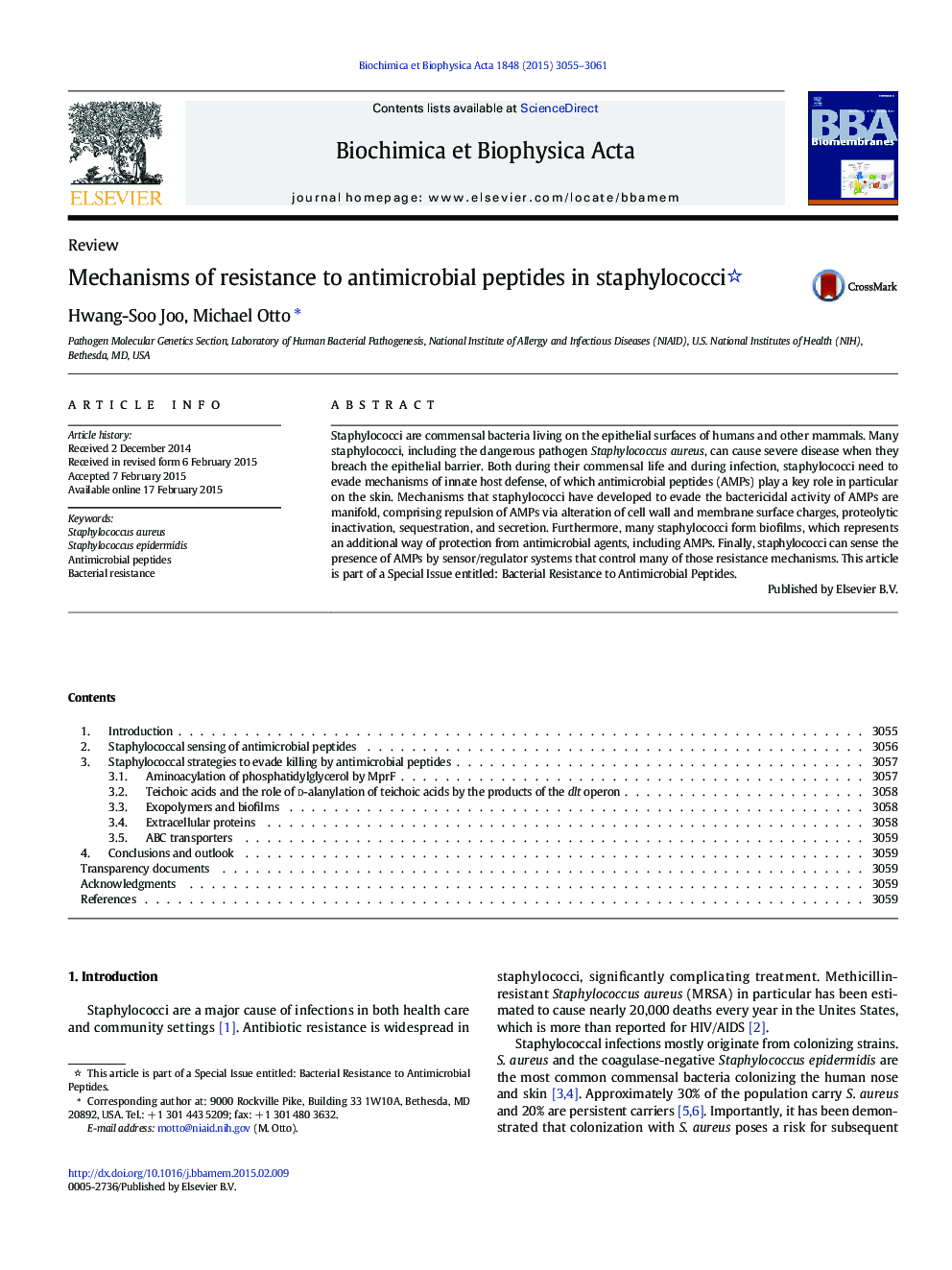| کد مقاله | کد نشریه | سال انتشار | مقاله انگلیسی | نسخه تمام متن |
|---|---|---|---|---|
| 1944015 | 1053171 | 2015 | 7 صفحه PDF | دانلود رایگان |
• Staphylococci have multiple mechanisms to evade killing by antimicrobial peptides (AMPs).
• Key AMP resistance mechanisms are controlled by an AMP-sensing system.
• Biofilm formation represents an additional non-specific mode of protection from AMPs.
Staphylococci are commensal bacteria living on the epithelial surfaces of humans and other mammals. Many staphylococci, including the dangerous pathogen Staphylococcus aureus, can cause severe disease when they breach the epithelial barrier. Both during their commensal life and during infection, staphylococci need to evade mechanisms of innate host defense, of which antimicrobial peptides (AMPs) play a key role in particular on the skin. Mechanisms that staphylococci have developed to evade the bactericidal activity of AMPs are manifold, comprising repulsion of AMPs via alteration of cell wall and membrane surface charges, proteolytic inactivation, sequestration, and secretion. Furthermore, many staphylococci form biofilms, which represents an additional way of protection from antimicrobial agents, including AMPs. Finally, staphylococci can sense the presence of AMPs by sensor/regulator systems that control many of those resistance mechanisms. This article is part of a Special Issue entitled: Bacterial Resistance to Antimicrobial Peptides.
Journal: Biochimica et Biophysica Acta (BBA) - Biomembranes - Volume 1848, Issue 11, Part B, November 2015, Pages 3055–3061
